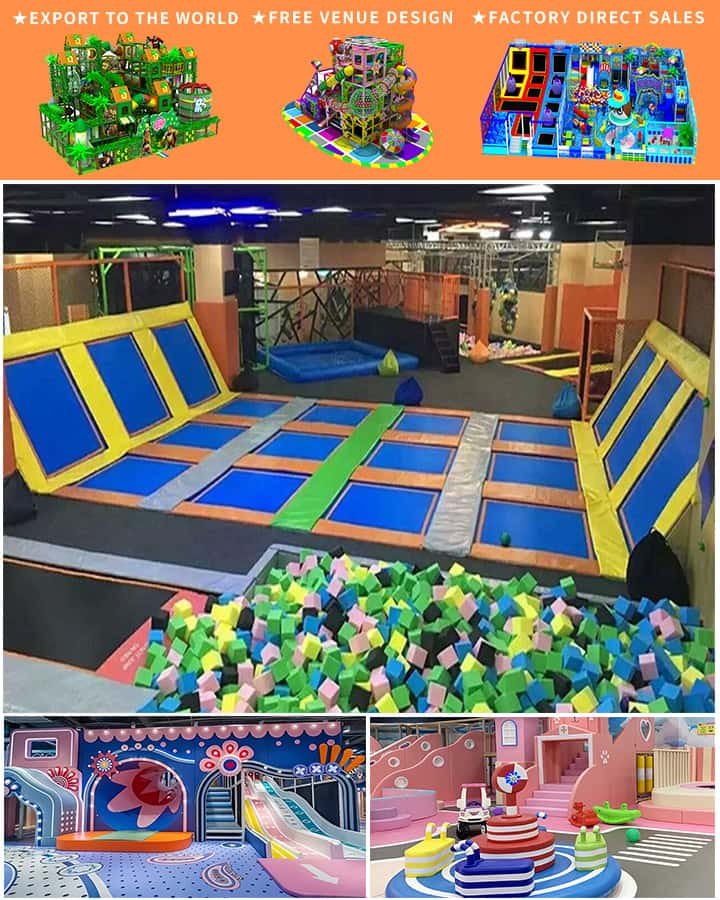In today’s fast-paced world, providing children with a space where they can play, learn, and grow is more important than ever. An indoor playground is the perfect solution for parents, schools, and community centers looking to offer a safe and stimulating environment for kids. Here’s a comprehensive guide to creating the ultimate indoor playground that will keep children entertained and active year-round.
Why Indoor Playgrounds Matter
Indoor playgrounds offer several advantages over their outdoor counterparts. They are weather-dependent, allowing kids to play regardless of rain, snow, or extreme temperatures. Additionally, indoor playgrounds provide a controlled environment, ensuring higher levels of safety and hygiene. With soft flooring materials and padded structures, the risk of injury is significantly reduced compared to traditional outdoor play areas.
Key Elements of an Indoor Playground
1. Climbing Structures: Climbing walls, ropes, ladders, and slides are essential components of any indoor playground. These structures help develop motor skills, coordination, and strength while promoting physical activity.
2. Interactive Play Areas:
 Interactive zones featuring sensory elements, puzzles, and educational games encourage cognitive development. Incorporating technology like interactive screens or virtual reality can make these areas even more engaging.
Interactive zones featuring sensory elements, puzzles, and educational games encourage cognitive development. Incorporating technology like interactive screens or virtual reality can make these areas even more engaging.
3. Soft Play Equipment: Soft play equipment such as foam blocks, ball pits, and inflated bounce houses are perfect for younger children. These items provide a safe environment for toddlers to crawl, jump, and explore their surroundings.
4. Themed Areas: Themed play areas, such as pirate ships, castles, or jungles, can captivate children’s imaginations and create a sense of adventure. These themes can also be used to incorporate educational content, making learning fun and interactive.
Safety First
Safety should always be the top priority when designing an indoor playground. Ensure all equipment meets safety standards and is regularly inspected for wear and tear. Non-toxic materials should be used, especially in areas frequented by young children who might put things in their mouths. Proper supervision and clear rules about behavior can further enhance safety.
Benefits Beyond Fun
While the primary goal of an indoor playground is to provide fun, it also comes with numerous developmental benefits. Children improve their social skills by interacting with others, and the physical activities promote overall health and fitness. Furthermore, the variety of stimuli helps in developing sensory processing abilities, fine motor skills, and problem-solving capabilities.
Maintenance and Upkeep
Like any facility, indoor playgrounds require regular maintenance to ensure they remain safe and enjoyable. Cleaning schedules should be established to keep the area hygienic, and minor repairs should be promptly addressed to prevent accidents. Additionally, periodic upgrades and additions can keep the playground fresh and exciting for repeat visitors.
Conclusion
An indoor playground is a fantastic investment for fostering children’s physical, social, and cognitive development. By thoughtfully incorporating climbing structures, interactive play areas, soft play equipment, and themed zones, you can create a magical space where kids can learn through play. Remember to prioritize safety, maintain the area properly, and keep it updated to ensure it remains a beloved destination for children and parents alike.
With the right planning and execution, your indoor playground can become a haven of joy and creativity, providing endless hours of entertainment and enrichment for children of all ages.




